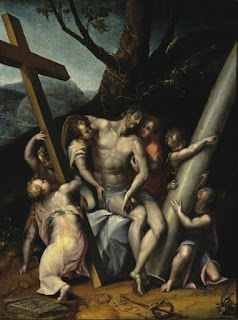Camillo Olivetti - electrical engineer
Founder of Italy’s first typewriter factory
The electrical engineer Camillo Olivetti, who opened Italy’s first typewriter factory and founded a company that would become a major player in electronic business technology, was born on this day in 1868 in Ivrea in Piedmont. The Olivetti company that later produced Italy’s first electronic computer was developed by Adriano Olivetti, the oldest of Camillo's five children, but it was his father’s vision and enterprise that laid the foundations for the brand’s success and established the Olivetti name. Camillo came from a Jewish middle-class background. His father, Salvador Benedetto, was a successful merchant. His mother, Elvira, came from a banking family in Modena but her interests were more cultural. She was fluent in four languages. Elvira had full care of Camillo after Salvador died when the boy was only one and sent him to boarding school in Milan at a young age. Although his mother’s linguistic skills helped him - he learned English early in his life - she understood his inclination to work in electronics. After graduating from the Royal Italian Industrial Museum (later the Polytechnic of Turin) with a diploma in industrial engineering, Camillo broadened his knowledge by travelling. Read more…
______________________________________
Domenico Dolce - fashion designer
One half of hugely successful Dolce & Gabbana company
The designer Domenico Dolce, whose partnership with Stefano Gabbana gave rise to one of the world’s most famous fashion houses, was born on this day in 1958 in Polizzi Generosa, a beautiful town set in the hills of northern Sicily, about 90km (56 miles) southeast of Palermo. He and Gabbana, who he met in Milan, founded Dolce & Gabbana in 1985. The company took off in 1993 after the pop star Madonna chose them to design the costumes for a concert tour. The company today generates about €1.3 billion in revenues and employs 5,500 people worldwide. Dolce was born into the world of clothes. His father was a tailor and his mother worked in retail, at different times selling fabrics and lingerie. He is said to have learned to sew at the age of six and made costumes for dolls. After studying at art college in Palermo, Dolce moved to Milan to attend the fashion design school Istituto Marangoni. He already had dreams of working for Giorgio Armani and grew impatient to begin working in the fashion industry, dropping out of his course before completing it and taking a job in the sewing workshop of designer Giorgio Correggiari. Read more…
_____________________________________
Aurelio Saffi – republican activist
Politician prominent in Risorgimento movement
The politician Aurelio Saffi, who was a close ally of the republican revolutionary Giuseppe Mazzini during Italy’s move towards unification in the 19th century, was born on this day in 1819 in Forlì. He was a member of the short-lived Roman Republic of 1849, which was crushed by French troops supporting the temporarily deposed Pope Pius IX, and was involved in the planning of an uprising in Milan in 1853. Saffi was sentenced to 20 years in jail for his part in the Milan plot but by then had fled to England. He returned to Italy in 1860 and when the Risorgimento realised its aim with unification Saffi was appointed a deputy in the first parliament of the Kingdom of Italy in 1861. At the time of Saffi’s birth, Forlì, now part of Emilia-Romagna, was part of the Papal States. He was educated in law in Ferrara, but became politically active in his native city, protesting against the administration of the Papal legates. He soon became a fervent supporter of Mazzini, whose wish was to see Italy established as an independent republic and saw popular uprisings as part of the route to achieving his goal. Read more…
____________________________________
Salvador Luria – microbiologist
Award winning scientist who advanced medical research
Nobel prize winner Salvador Luria was born on this day as Salvatore Edoardo Luria in 1912 in Turin. The microbiologist became famous for showing that bacterial resistance to viruses is genetically inherited and he was awarded a Nobel prize in 1969. He studied in the medical school of the University of Turin and from 1936 to 1937 Luria served in the Italian army as a medical officer. He took classes in radiology at the University of Rome and began to formulate methods of testing genetic theory. When Mussolini’s regime banned Jews from academic research fellowships, Luria moved to Paris but was forced to move again when the Nazis invaded France in 1940. Fearing for his life, he fled the capital on a bicycle, eventually reaching Marseille, where he received an immigration visa to the United States. In America he met other scientists with whom he collaborated on experiments. In 1943 Luria carried out an experiment with the scientist Max Delbruck that demonstrated that mutant bacteria can still bestow viral resistance without the virus being present. He became chair of Microbiology at the Massachusetts Institute of Technology. Read more…

.jpg)

.jpg)

_-_Foto_Giovanni_Dall'Orto,_12-Aug-2007_-_02%20(2).jpg)
.jpg)

%20(2).png)


.jpg)
.jpg)



